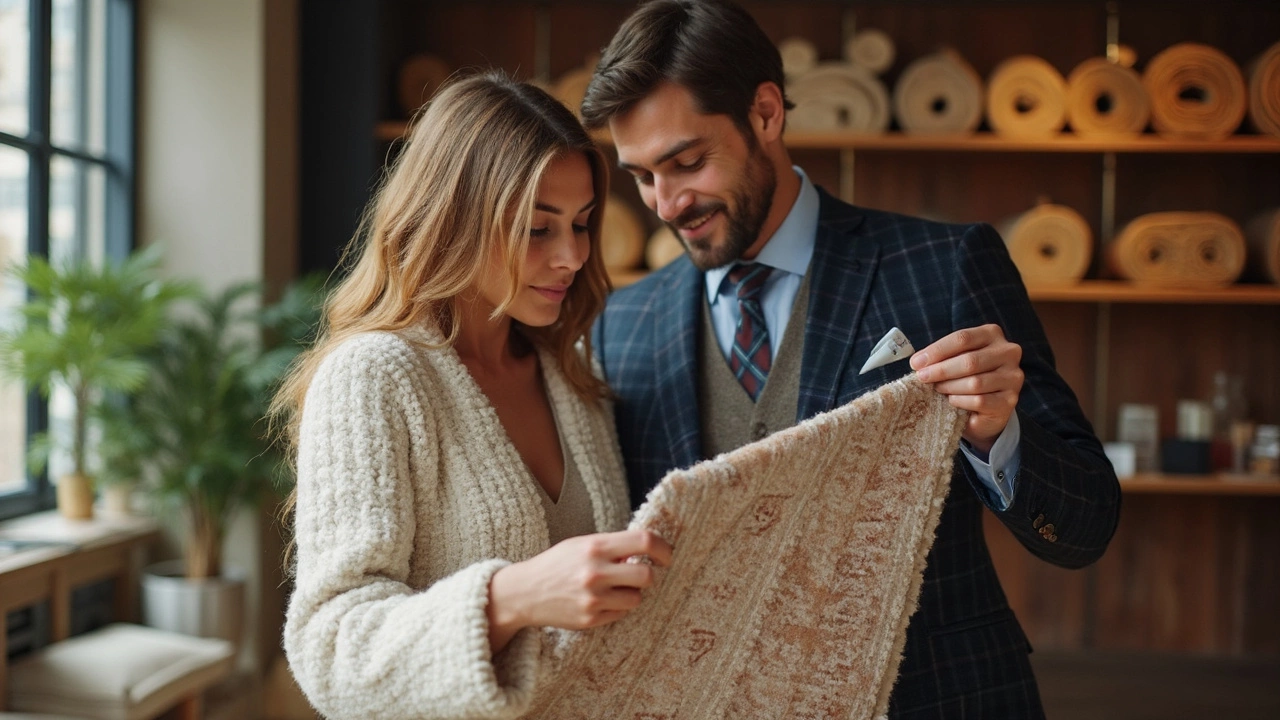Luxury Rugs: How to Pick Eco‑Friendly Elegance for Any Room
Thinking about adding a plush rug but don’t want to sacrifice the planet? You’re not alone. Luxury rugs can look amazing and still be kind to the Earth. Below you’ll find simple steps to choose a rug that feels fancy, lasts long, and matches your eco‑conscious values.
Know Your Materials
First, look at what the rug is made from. Natural fibers like wool, organic cotton, jute, and sisal are renewable and biodegradable. Wool scores high on durability, so a wool rug can stay soft for years without shedding. If you love a silky feel, check for bamboo or hemp blends – they give a smooth texture while using fast‑growing plants.
Beware of synthetic blends that contain recycled plastic. While they reduce waste, they don’t breathe like natural fibers and can off‑gas chemicals when new. If you decide on a recycled polyester rug, choose one that’s certified low‑VOC and free from harmful dyes.
Size, Shape, and Placement Tips
Measure the room before you shop. A rug that’s too small makes the space feel disjointed; too large can drown furniture. A good rule of thumb: leave at least 18‑24 inches of floor exposed around the rug for a balanced look.
For open‑plan living areas, a large rectangular rug can define the seating zone, while a round rug works well under a coffee table to soften sharp edges. In bedrooms, a runner or a rug that sits under the bed adds warmth without cluttering the floor.
When you’re placing a rug, think about traffic flow. High‑traffic areas need a tougher pile that resists crushing. Low‑traffic zones can afford a deeper, plusher pile for extra comfort.
Eco‑Friendly Buying Hacks
Shop from brands that are transparent about their supply chain. Look for certifications like GOTS (Global Organic Textile Standard) for organic fibers or Fair Trade for ethical labor. These labels usually mean the rug was made without harmful chemicals and that workers were paid fairly.
Don’t forget about the backing and stitching. A natural latex backing is better than a rubber one that may contain petroleum‑based ingredients. Hand‑tied knots in a rug often indicate higher craftsmanship and a longer lifespan.
Caring for Your Luxury Rug
Proper care extends the life of any rug, making it even more sustainable. Vacuum regularly with a gentle brush attachment to lift dust without damaging fibers. Spot‑clean spills immediately using a mild, eco‑friendly detergent and a soft cloth – never rub, just blot.
Professional cleaning once a year is a good idea, especially for large wool rugs. Choose a cleaner that uses low‑impact methods like steam or dry cleaning without harsh chemicals.
Rotate the rug every six months to even out wear, especially in high‑traffic spots. This simple trick keeps the pattern looking fresh and prevents one side from flattening.
Wrap‑Up
Luxury doesn’t have to mean waste. By focusing on natural materials, ethical makers, and proper maintenance, you can enjoy a gorgeous rug while reducing your environmental footprint. Start with these guidelines, and you’ll find a rug that feels premium, looks stunning, and lasts for years to come.
-

How to Spot an Expensive Rug: Quick Tells for Every Shopper
Ever walked into a store and wondered if that stunning rug is actually worth its price tag? This article breaks down the clearest signs that a rug is genuinely high-end. You'll learn what materials, weaving techniques, and design details set luxury rugs apart from the mass-produced kinds. We'll also touch on expert tricks like checking the back of the rug and feeling the fibers. Get ready to spot a true investment piece, even if you’re totally new to rug shopping.
